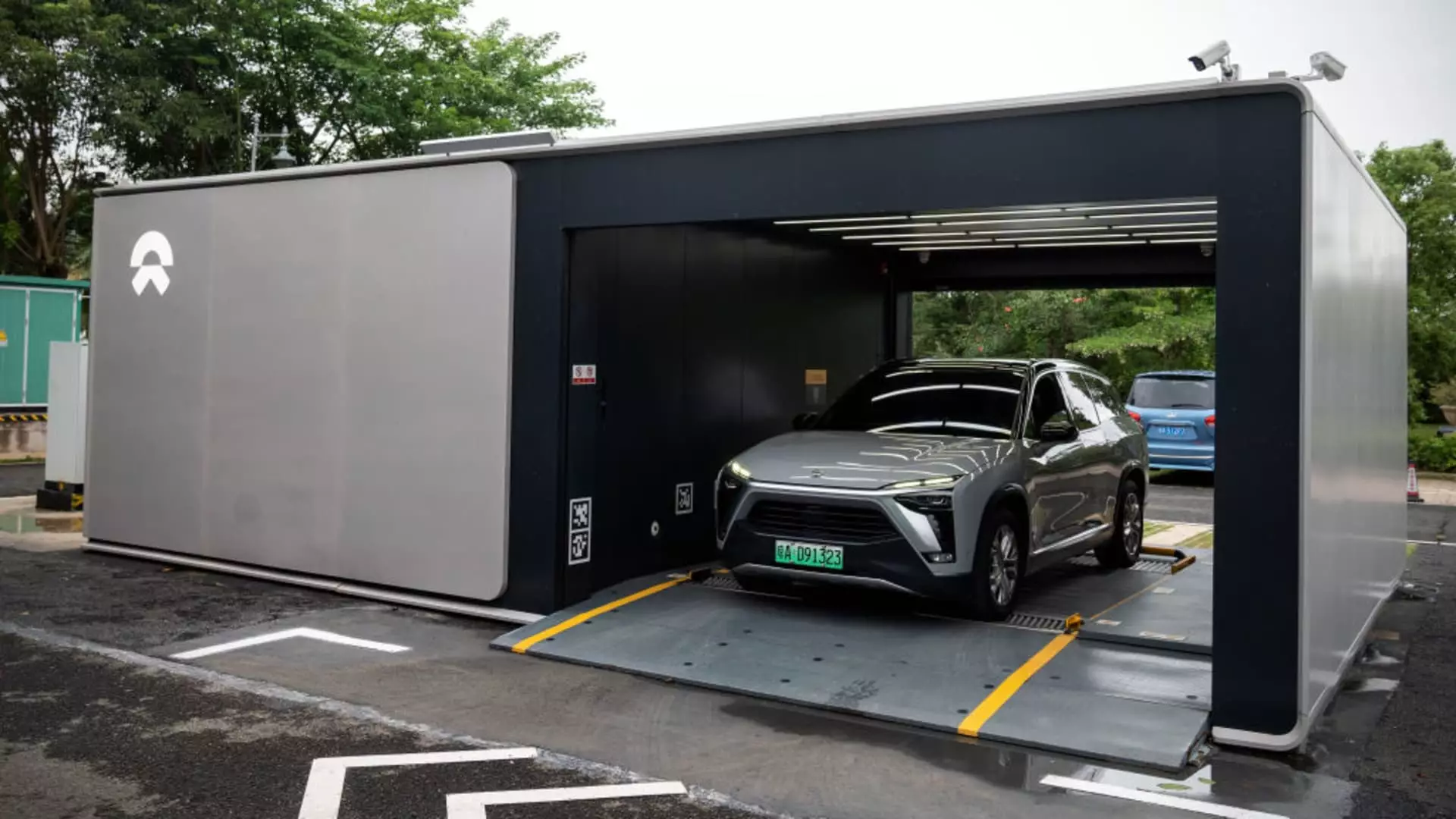In a bid to gain a competitive edge in the electric vehicle (EV) market, Chinese electric car company Nio has been strategically expanding its battery swap partnerships. Collaborating with at least four prominent Chinese automakers, including Changan, Geely, Chery, and JAC, Nio aims to develop battery swap standards and grow its network across China. These efforts are primarily focused on addressing consumers’ anxiety regarding driving range, as battery swapping offers a faster alternative to traditional charging stations. By partnering with local battery companies and industry leaders, Nio is paving the way for a more efficient and convenient EV infrastructure.
According to Nio’s senior vice president, Shen Fei, the primary goal of the company’s battery swap initiative is to enhance user experience and make charging more convenient than refueling. By offering a quick three-minute battery swap for drivers who opt into a paid service plan, Nio is setting a new standard for efficiency and reliability in the EV ecosystem. Moreover, the company’s commitment to expanding its battery swap network to accommodate more car models ensures that drivers can stay up-to-date with the latest advancements in battery technology.
While battery swapping presents a promising solution to range anxiety, industry experts remain skeptical about its long-term viability. Tu Le, head of consultancy Sino Auto Insights, highlights the massive investment required for battery inventory and the challenge of attracting enough users to make swapping economically feasible. However, with the Chinese government’s support and Nio’s strategic alliances, the future of battery swapping in the EV market looks promising. By creating a collaborative ecosystem that encourages industry-wide participation, Nio is paving the way for a more sustainable and efficient transportation system.
Beyond China, the global electric vehicle market is also witnessing rapid developments in battery swap technology. While companies like Tesla and Ample have experimented with swapping stations in the past, the success of these initiatives remains mixed. However, with growing partnerships and increasing demand for sustainable transportation solutions, battery swapping is gaining momentum worldwide. Tesla’s extensive network of superchargers and collaborations with other automakers signal a shift towards more accessible and user-friendly charging options for EV drivers.
As the electric vehicle industry continues to evolve, the need for sustainable and efficient battery technologies becomes increasingly crucial. Nio’s partnership with battery giant Contemporary Amperex Technology (CATL) to develop longer-lasting batteries reflects a commitment to environmental stewardship and technological innovation. By leveraging battery swap technology and big data, Nio aims to extend the lifespan of batteries and minimize waste in the EV ecosystem. With battery swap stations poised to revolutionize the way we power our vehicles, the future of electric mobility looks brighter than ever.
The future of battery swap technology in the EV ecosystem is filled with promise and potential. By fostering partnerships, embracing innovation, and prioritizing sustainability, companies like Nio are driving the transformation of the automotive industry. As battery technology continues to evolve and consumer demand for electric vehicles grows, the integration of battery swap stations into the mainstream infrastructure will play a pivotal role in shaping the future of transportation. Through collaboration, investment, and a shared commitment to building a greener future, the electric vehicle industry is poised to revolutionize the way we drive, charge, and power our vehicles.

Leave a Reply